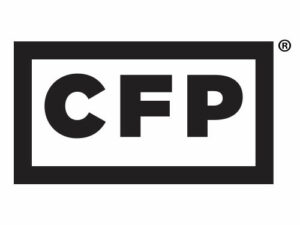By Bryan Trugman, CFPⓇ
With life expectancies increasing and the cost of living going up, it’s more important than ever to plan for your future. Fortunately, there are several tax-planning strategies that can help you minimize your tax liability and keep more of what you earn in your pocket. At Attitude Financial Advisors, our goal is to assist our clients in optimizing their financial resources and minimizing unnecessary expenses (like taxes).
Whether you’re just starting out in your career or approaching retirement age, it’s never too late to start thinking about tax-planning strategies that can help you confidently pursue your financial goals.
Check out this guide in which we’ll explore 5 tax-planning strategies you can use to maximize your net worth—and hopefully it’ll change your attitude toward tax planning for the better.
Maximize Your Retirement Plan Contributions
Maximizing your retirement contributions is one of the best ways to minimize your tax liability. This is because retirement plans offer useful tax advantages that are not available if you were to simply put your money in a savings account. There are several accounts to consider, depending on your unique circumstances:
- 401(k), 403(b), and 457 Plans: These accounts allow you to contribute up to $20,500 annually for 2022 ($27,000 if over age 50). In 2023, these amounts have increased to $22,500 and $30,000 if over the age of 50. Not only that, but contributions done pre-tax will reduce your taxable income, and therefore your tax liability in the current year. This is a great way to defer taxes until your retirement years when you could potentially be in a lower tax bracket.
- Traditional IRA: Contributing to a traditional IRA is another way to reduce your tax liability if your income is within certain limits. You can contribute up to $6,000 for 2022 and $6,500 in 2023. Both years have the same $1,000 catch-up contribution limit for those over age 50. Unlike the qualified retirement plans listed above, contributions to a traditional IRA can be made until the April 15th tax filing deadline.
- Roth IRA: This is an attractive savings vehicle for many reasons, including no required minimum distributions (RMDs), tax-free withdrawals after age 59½, and the ability to pass wealth tax-free to your heirs. The contribution limits are the same as traditional IRAs. However, one’s eligibility to contribute to Roth IRAs have income restrictions and you may not be eligible if you are above certain limits.
- Solo 401(k): Typically, self-employed persons and business owners with no employees can contribute up to $61,000 for 2022 and $66,000 in 2023 to a solo 401(k). Like other types of 401(k) plans, these contributions will reduce your current-year taxable income but would be taxed upon distribution in retirement.
Utilize Roth Conversions
If you are outside of the income eligibility threshold for Roth IRAs but still want to take advantage of the Roth tax benefits, a Roth conversion could be the right strategy for you. It works by paying the income tax on your pre-tax traditional IRA and converting the funds to a Roth IRA.
You could also consider the mega backdoor Roth and backdoor Roth IRA strategies:
- Mega Backdoor Roth: With this strategy, you would convert a portion of your 401(k) plan to a Roth. This involves first maximizing the after-tax, non-Roth contributions ($40,500 for 2022 and $44,500 in 2023) in your plan, then rolling it over to either a Roth 401(k) or your Roth IRA. With the mega backdoor Roth, you convert a portion of your 401(k) plan to Roth dollars.
- Backdoor Roth IRA: In this case, you would make an after-tax (non-deductible) contribution to a traditional IRA. You then immediately convert the funds to a Roth IRA to prevent any earnings from accumulating. With this strategy, you can generally avoid taxes on the conversion if you do not have any other pre-tax IRA assets. If you already have a traditional IRA, then a portion of the amount converted will be included in your taxable income.
All three Roth conversion strategies will allow the contributions to grow completely tax-free and allow you to avoid future RMDs, which is helpful if you expect to be in a higher tax bracket in the future.
Contribute to a Donor-Advised Fund
If you itemize your tax deductions because of charitable contributions, you may want to consider investing in a donor-advised fund (DAF). You can contribute a lump sum all at once and then distribute those funds to various charities over several years. With this strategy, you can itemize deductions when you make the initial contribution and then take the standard deduction in the following years, allowing you to make the most out of your donation tax-wise.
You can also donate appreciated stock, which can further maximize your tax savings. By donating the appreciated position, you avoid paying the capital gain tax that would have been due upon sale of the stock and you are effectively donating more to your charities of choice than if you had sold the stock and donated the proceeds.
Make a Qualified Charitable Distribution
If you own a qualified retirement account and are at least 70½, you can use a qualified charitable distribution (QCD) to receive a tax benefit for your charitable giving. Since this is an above-the-line deduction, it can be used in conjunction with other charitable tax strategies. A QCD is a distribution made from your retirement account directly to your charity of choice. It can also count toward your RMD when you turn age 73, but unlike RMDs, it won’t count toward your taxable income. Individuals can donate up to $100,000 in QCDs per year, which means a married couple can contribute a combined amount of $200,000!
Make Sure Your Advisory Team Is Working Together
Beyond consulting with a tax professional, you’ll want to be sure your entire financial team is working together to provide cohesive oversight and guidance. This should include professionals like CPAs, financial advisors, investment advisors, and estate attorneys. Your finances don’t exist in a bubble and so neither will your tax minimization strategies. When your advisory team works together, strategies are easier to identify and execute, and proactive tax solutions become much easier to implement, reducing stress and your tax bill.
“It is never too early to begin saving for the future, implementing a good plan that saves taxes and allows you to put more away,” says Margo Kane, CPA. “Life goes by quickly and throws curves at you. Being proactive and working with your CPA and financial advisor in tandem is a win-win way to prepare yourself for the days to come. My favorite story is about two young girls who started a nail salon 30 years ago. I forced them to put money in IRA’s every year and then, as the business grew, into a company retirement plan. They now each have more than 1M for their retirement!”
Stop Overpaying Today
Our mission is to revolutionize your attitude regarding taxes. Instead of being a headache, with effective strategies, tax planning can help maximize your hard-earned savings. We know you’re tired of overpaying in taxes, you’re over the added stress and complications, and you’re ready for creative solutions. With the Attitude Financial Advisors team on your side, we can use our tools and expertise to help you navigate these strategies and more.
To get started, reach out to me via email at btrugman@attitudefinancial.com or give me a call at (516) 762-7603. We also invite you to schedule a no-cost 60-minute consultation to help answer your questions, learn more about you, the people in your life, and what you want to achieve.
About Bryan
Bryan Trugman is managing partner, co-founder, and a CERTIFIED FINANCIAL PLANNER™ practitioner at Attitude Financial Advisors. With more than 14 years of experience, Bryan specializes in addressing the financial needs of new parents as they seek to realign their finances, assisting divorced individuals as they navigate an unforeseen fork in the road, and strategizing with those seeking to accrue a dependable retirement nest egg. Bryan is known for being a good listener and building strong relationships with his clients so he can help them develop a customized financial plan based on what’s important to them. He is passionate about helping his clients experience financial confidence so they can worry less and play more. Bryan has a bachelor’s degree in industrial and systems engineering with a minor in mathematics from State University of New York at Binghamton. He has served on the board of the Financial Planning Association and continues to be actively involved in the national organization. He is also a member of the Plainview-Old Bethpage Chamber of Commerce and has served as its vice president and as a board member. When he’s not working, you can find Bryan on the ballroom dance floor or engaged in a fast-paced game of doubles on the tennis court. To learn more about Bryan, connect with him on LinkedIn. Or, watch his latest webinar on: How Much Is Enough? A Surprisingly Simple Way to Calculate Your Retirement Savings Needs.
About Margo
Margo Kane has been a Certified Public Accountant in the New York area for over 25 years. Margo and her team at Margo Kane, CPA, based in Manhasset, NY, offer a broad range of accounting and taxation services for business owners, executives, individuals, and independent professionals. To contact Margo call 516-365-9311 or email mk@mkanecpa.com.
Margo Kane, CPA is not affiliated with Attitude Financial Advisors and Cambridge. Margo Kane, CPA does not offer securities or investment advisory services.



